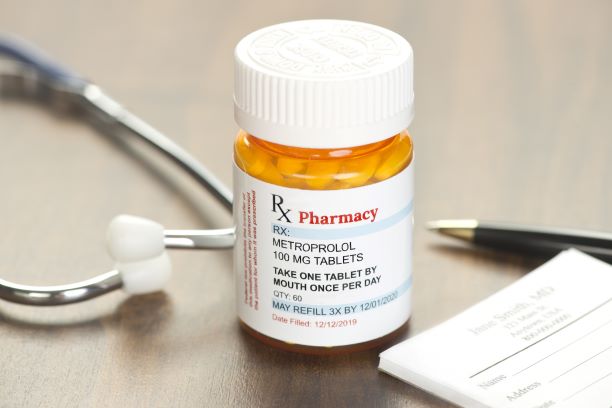Table of Contents
There is no doubt that the rising cost of healthcare, rising premiums, and increased limitations on covered services are causing a strain on the American healthcare system. The rising cost of health care has left many Americans frustrated and even calling for a universal healthcare system.

As an entrepreneur, freelancer, and self-employed individual myself, I understand what it is like to face high premium cost, high deductibles, and high out-of-pocket costs.
Property of rehaballey.com
After doing much research, I was able to find cheaper alternatives to traditional health insurance. These alternatives have lowered my overall healthcare costs tremendously.
In the paragraphs below, I have listed my top 6 alternatives to traditional health insurance. And, I am certain this will provide you with valuable information on how you can reduce your healthcare costs as well. So without further ado, let’s dive in.
#1 Cost-Sharing Ministries

What are cost-sharing ministries?
Cost-sharing or health sharing plans are a type of health coverage and are typically faith-based, non-for-profit organizations. Individuals or members of the program agree to make monthly payments to help cover medical costs for themselves and other members of the program.
Cost-sharing programs are NOT insurance and therefore can not guarantee that all medical bills will be shared. However, they work similar to traditional insurance. The cost per month is SIGNIFICANTLY cheaper than traditional insurance. T
his makes cost-sharing programs more affordable to healthier individuals, younger individuals, those who are looking to supplement their health insurance or Medicare, and those who are not eligible to receive health insurance through their current employers.
How do cost-sharing plans work?
The way these work are that individuals or members pay a set monthly fee as determined by the level of sharing that they decide to register for. Most programs have at least (3) different sharing levels. The higher the sharing level, the more health coverage you will receive, and the higher the monthly cost will be.
Property of rehaballey.com
For example, some programs agree not to share or cover the cost of maternity, medical testing (outside of a hospital), therapy-related services, and doctor’s visits for members in the lowest sharing level. Therefore, it is important to know you or your family’s particular needs when signing up.
What are the limitations?
Most programs also have a limit on how much they will cover per medical incident; however, most sharing plans also have an additional program. These programs add an additional monthly or quarterly fee for individuals who prefer to have more medical expenses covered in times of emergencies.
Most health sharing plans only agree to pay for medical bills that are over a certain amount. Anything below that amount, members will have to pay on their own, out-of-pocket.
In addition, most sharing plans also do not cover preventative services. Therefore, it is always good to have some money saved to cover those smaller healthcare expenses.
What is the process?
In the case of a medical need, required billing and paperwork will have to be submitted to your particular health sharing program. T
he program will then determine if your medical bill is eligible for sharing. If you are eligible then you will be receiving direct payment in the amount of your medical bill to help you cover those costs.
Property of rehaballey.com
Again, the majority of health-sharing ministries are faith-based and therefore have stricter guidelines on what they will cover. For example, most programs do not cover medical expenses related to smoking or other lifestyle conditions contrary to the Christian lifestyle.
Examples of some health-sharing ministries include:
- Christian Healthcare Ministries (Link)
- Liberty Healthshare (Link)
- Medi-Share (Link)
- Samaritan’s Purse (Link)
To join Christian Healthcare Ministries click HERE.
#2 MultiPlan PPO

What is Multiplan PPO?
MultiPlan (Link) is another alternative to traditional health insurance. MultiPlan is the largest Preferred Provider Network (PPO) in the nation and provides access to over 4,200 hospitals, 450,000 physicians/specialists, and 90,000 ancillary care facilities.
Although MultiPlan is NOT health insurance, the purpose of MultiPlan PPO is to provide a wider range of in-network providers that consumers do not typically have access to under traditional medical insurance.
MultiPlan PPO is a contractor between insurance companies (insurance company logo will be printed on the top of your card) and physicians. These plans provide patients with lower out-of-pocket expenses and a wider range of network coverage.
Property of rehaballey.com
Since MultiPlan is a PPO network, members do not have to choose a doctor or specialist as they would with an HMO network. Therefore, members can choose to see any doctor they prefer as long as they stay in the network.
MultiPlan PPO also negotiates prices of services between the insurance companies and physicians, which helps to keep the cost of health services low.
What are the benefits?
There are many benefits offered by members of the MultiPlan PPO network as well. Members are typically given anywhere between 30% -70% discounts on eligible medical services. In some cases, members may be eligible to receive cash payments to assist with lowering the cost of medical expenses.
These cash payments are similar to accident and hospital indemnity plans. Furthermore, the cash payments are solely dependent upon the plan level that an individual signs up for.
MultiPlan PPO typically has a lower premium cost than a traditional insurance plan. These plans, however, are not as cost-effective as other alternatives.
For more information on MultiPlan PPO, please visit https://www.multiplan.com/
#3 Discount Plans

What are discount plans?
Another great alternative to traditional health insurance and one that I personally use are discount plans. Like cost-sharing and Multi-plan PPO, discount plans are NOT health insurance and exist to only provide discounts on eligible medical services.
Discount plans are by far the most cost-effective and usually range between $8-$30 a month depending on the type of plan. These plans, however, provide discounts for non-emergency health costs such as doctor visits, dental services, telehealth, ancillary services, and vision services.
Since the plan only provides discounts for non-emergency health costs, discount plans are a great way to supplement other non-traditional health coverages such as cost-sharing plans.
For example, if you have a cost-sharing plan that only agrees to cover expenses over a certain amount, you can use a discount plan to assist with the cost of services below that amount. Personally, I have saved up to 50% of doctor/dental visits using a discount plan.
What do these plans offer?
Some discount plans only provide vision services or only dental services. However, members of Christian Healthcare Ministries are eligible to receive a Total Health Plan at a reduced price. As per the date of this blog, the plan covers a wide range of medical services including:
- Dental
- Vision
- Telemedicine
- Medical Information
- Prescriptions
- Diabetic Care & Supplies
- Hearing Care
- Patient Advocacy
- Chiropractic & Alternative Medicine
Please visit Christian Healthcare Ministries at the link below for further details on the types of discount plans provided for members.
What is the process for payments?
Since discount plans are NOT insurance plans, it does not reimburse healthcare providers as traditional insurance plans do. You will simply pay the monthly fee as determined by the plan you have selected.
Then at the time of payment for services, you will present your discount card and receive the recommended discount on the services that were provided.
#4 Prescription Drug Discount Apps

With the rising cost of prescription medications, there is now an even greater demand for lower prescription costs. Even with Medicare and traditional health insurance, prescriptions can cost hundreds of dollars. Luckily there are apps that you can use on your phone to help lower the cost of prescription medications.
What are the benefits?
One of the great benefits of using a prescription drug discount app is that most are 100% free to use. These prescription drug discount apps compare drug prices from multiple pharmacies and provide coupons, discounts and more.
Because these apps provide the ability to compare drug prices from multiple pharmacies, an individual can save tons of money by choosing pharmacies that have lower prices.
Great, so how does it work?
I personally use GoodRx (Link), so I will briefly explain the steps and benefits of using this particular app. After adding the app to your phone, simply type in the name of the drug into the search bar.
The app will provide a list of discounted drug prices and compare them to various pharmacies near you. After selecting the pharmacy of your choice, you will be given the opportunity to save the coupon. Lastly, you will show this coupon to the pharmacist to receive your discount.
GoodRx also provides reminders for prescription refills, drug usage, drug dosing, as well as general tips and news.
Most apps work in similar ways, below are just (3) of the more popular drug prescription apps:
#5 Health Savings Accounts (HSA)

Although Health Savings Accounts (HSA’s) are not exactly an alternative to traditional health insurance, they are very good to have in addition to traditional health insurance.
In my opinion, this is one of the best assets an individual/family can have. Not only does a Health Savings Account assist with medical and/or health-related costs, but they have huge tax benefits. These tax benefits will be discussed in the following paragraphs.
Who is eligible for an HSA?
A Health Savings Account is an account that only those participating in a High Deductible Health Plan (HDHP) can take advantage of.
For 2020 a High Deductible Health Plan is any health insurance plan with a deductible of at least $1400 for individuals and $2800 for families (Link). In a Health Savings Account, individuals/families can set aside pre-tax money that can only be used for medical and/or health-related costs.
Property of rehaballey.com
Health Savings Accounts also roll over from year-to-year and are not subject to being lost if not used within a particular timeframe. In other words, this account can keep growing for as long as you like!
What are the tax benefits?
The pre-tax benefit of a Health Savings Account reduces the individual’s overall tax liability. Not only can you contribute pre-tax dollars to this account, but this money also grows tax-free, and can be withdrawn tax-free as well. Therefore, you do NOT have to pay taxes at ALL with the money in this account as long as it’s used for medical or health-related expenses.
As mentioned earlier once withdrawn, this money can only be used for medical or health-related purposes, such as:
- Copays
- Deductibles
- Coinsurance
- Prescriptions
- Any other out-of-pocket medical or health-related expenses.
Are there any limitations?
If for any reason this money is used for anything other than health-related and/or medical expenses, then the individual/family will have to pay a 20% penalty as of 2020.
However, once an individual reaches the age of 65 or becomes eligible for Medicare, the money withdrawn from an HSA can be used for ANY reason without owing a penalty. Now that’s a Sweet Deal!
There are, however, contribution limits to a Health Savings Account. For 2020 an individual can contribute up to $3550 to their HSA plan, and families can contribute up to $7100.
Property of rehaballey.com
For more information on an HSA’s and eligibility requirements, please refer to the (2) links below:
https://www.irs.gov/publications/p969
https://www.healthcare.gov/glossary/health-savings-account-hsa/
#6 Prevention

I know this sounds cliché, but prevention is probably the single most important way to reduce the cost of healthcare in America. An article (Link) shows that risk factors for metabolic syndrome, which are a cluster of preventable illnesses such as insulin resistance, obesity, high blood pressure, and high cholesterol, can increase an individual’s healthcare cost by 1.6 fold. For every additional risk factor their healthcare cost will increase by 24%.
How important is diet?
Most of the diseases we see today are preventable and can be traced back to a poor diet and low activity levels. There have many controversies on particular diet types and their effects on insulin resistance.
One study (Link) even reveals that a low-fat high-carbohydrate diet with moderate amounts of sucrose consumed for 15 days has deleterious effects on patients with non-insulin-dependent diabetes mellitus (NIDDM).
Although I am not a nutritionist and can not give nutrition advice, I will tell you that I have seen great benefits to my own health once I have switched to a diet comprised of more natural foods, less sugar, and ready-made, boxed meals.
The benefits that I have seen have led to fewer doctor visits, fewer illnesses, and fewer prescription medications. This has significantly reduced my overall health costs this year.
ALLEY TIPS: Please speak with Your Healthcare Provider Before making any changes to your diet.
Benefits of exercise
Furthermore, countless studies have demonstrated the benefits of exercise and physical activity. These studies have even shown positive effects on brain health, mental clarity, and cognition.
In my blog titled “Simple Activities Older Adults Can Do to Stay Active”, I talk about the benefits of daily activity, especially in older adults.
also discuss how increased time sitting idol can lead to higher disability. In this particular blog, I gave 7 examples of FUN activities older adults can engage in to stay active. You can read my blog on these 7 FUN activities by clicking HERE.
Property of rehaballey.com
Changing your diet and increasing your activity levels can have positive effects on your overall health and lead to a reduction in preventable diseases such as metabolic syndrome. In my opinion, this is one of the BEST protections against rising healthcare costs.
In closing, I hope this article provides some valuable information on alternatives to traditional health insurance. If you like this content and are looking for more great blogs you can visit my website at https://rehaballey.com/blog/. Take care and GOD BLESS YOUR ENDEAVORS!!


Pingback: Differences Between Acute Care vs. Inpatient Rehabilitation vs. Skilled Nursing vs. Outpatient Therapy Services - Rehab Alley